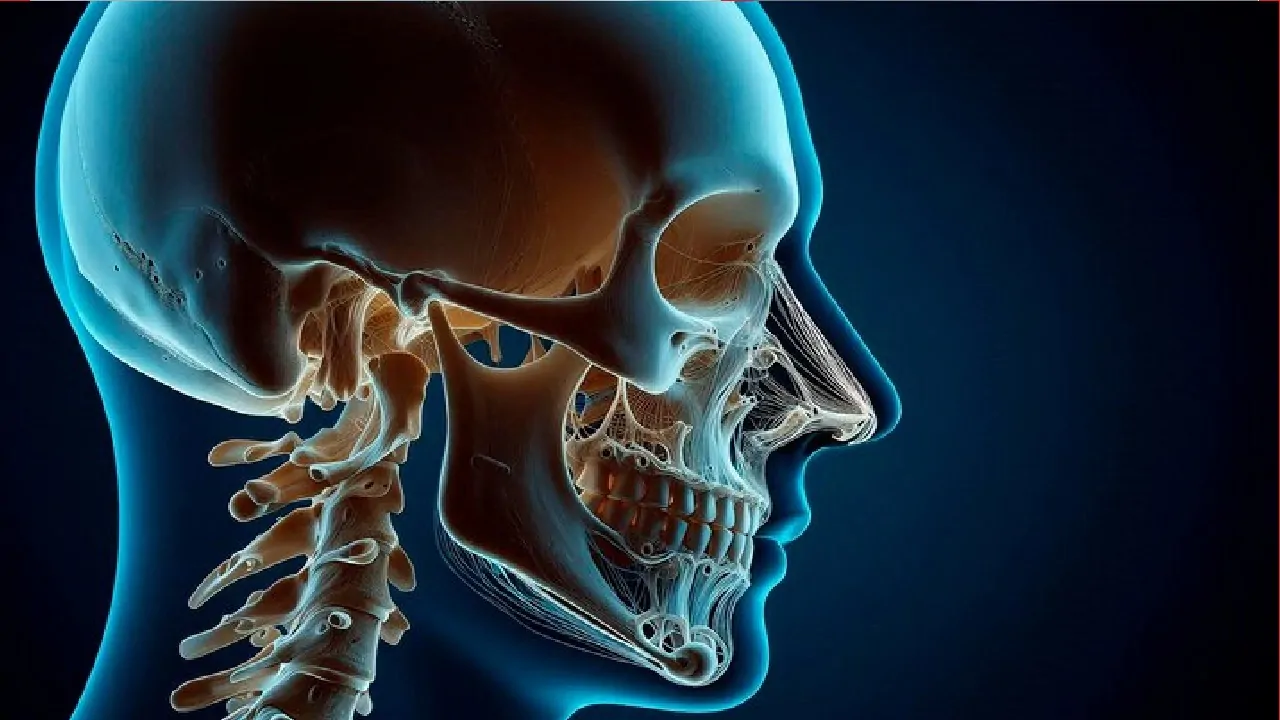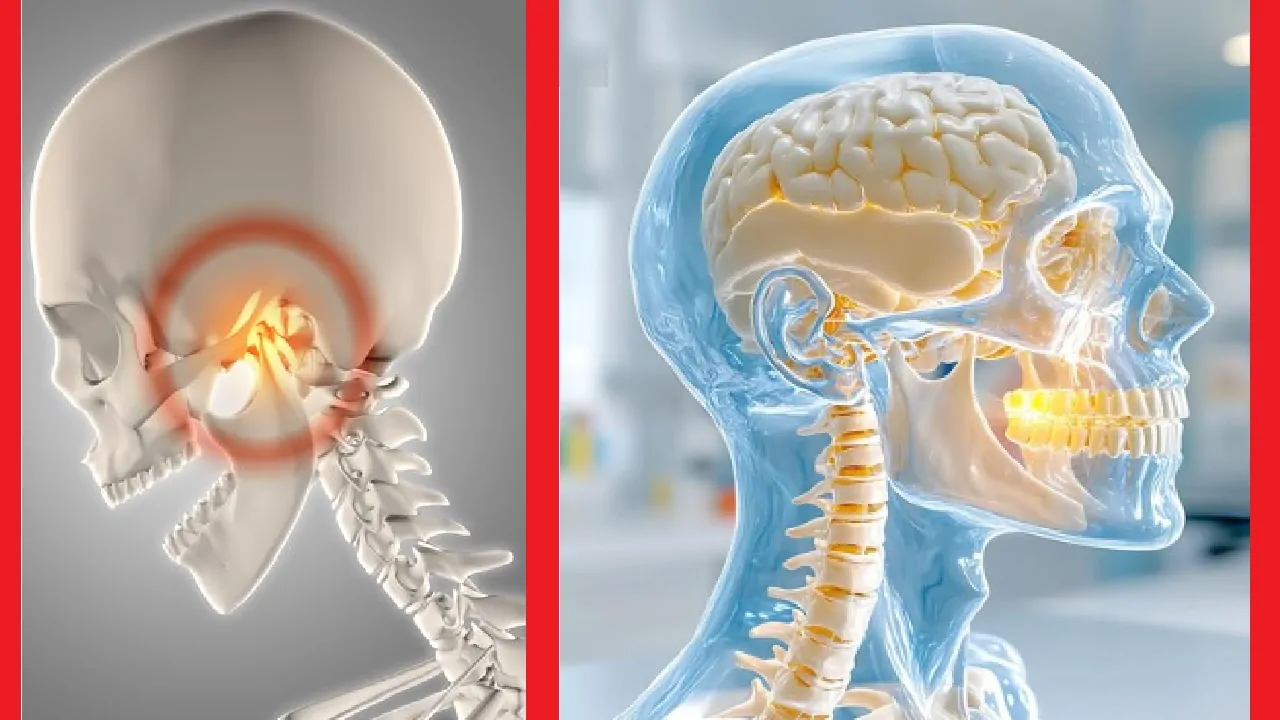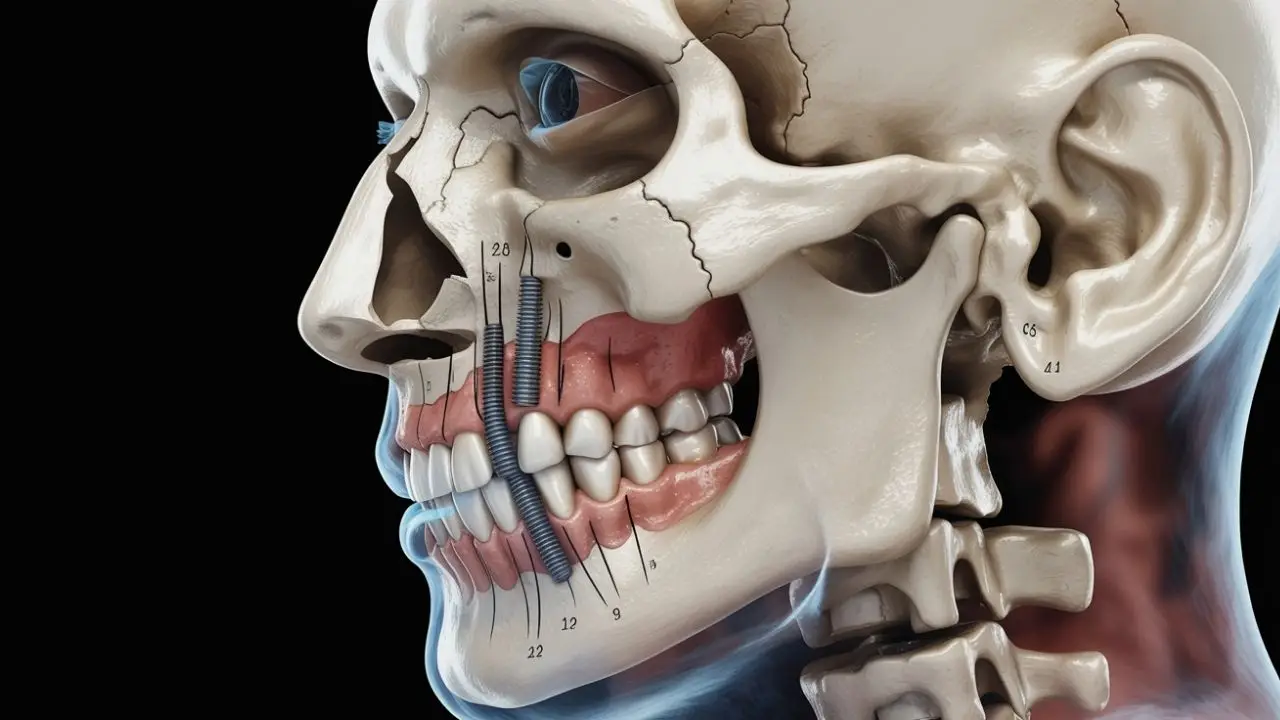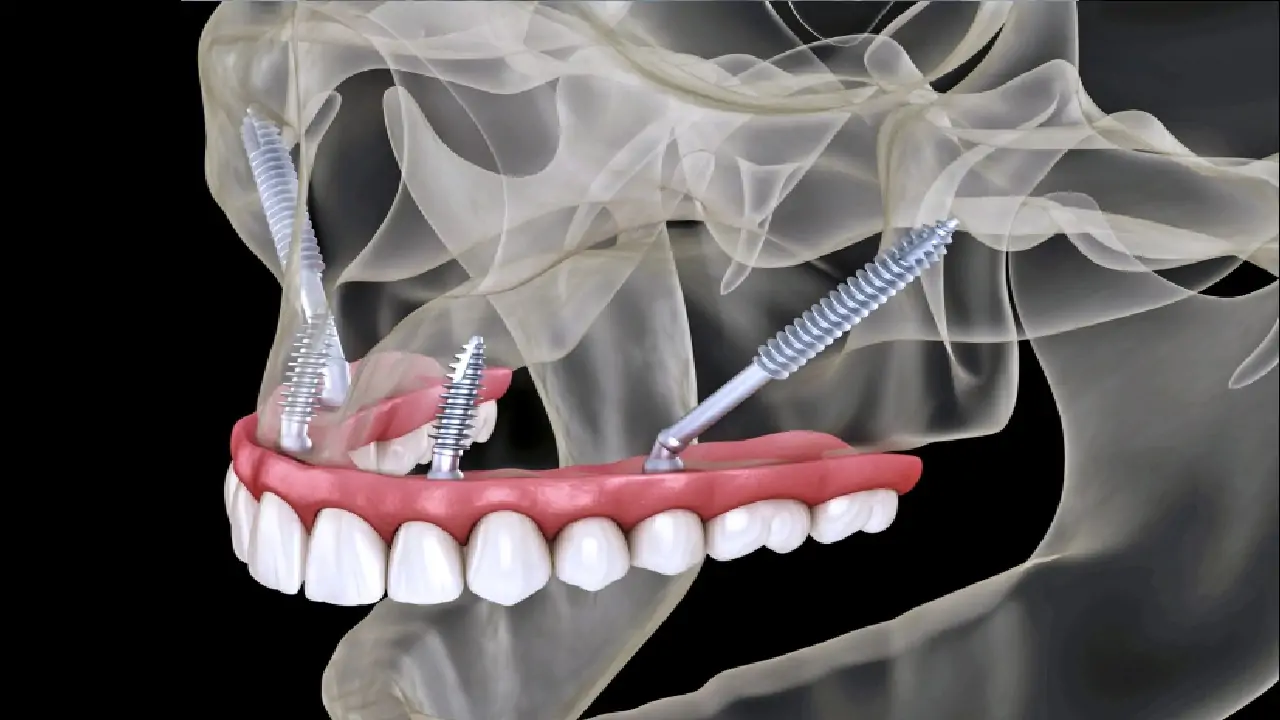A treatment that allows patients with low bone density in the upper jaw to benefit from dental implant therapy. In this procedure, dental implants are placed in the cheekbone (zygomatic bone) instead of the upper jaw bone. For this reason, the Zygomatic implant Procedure is also referred to as the cheekbone implant procedure.
Dental implants typically range in length from 8-15 mm, while zygomatic implants are between 30-50 mm in length. This procedure is designed for patients who have completed their bone development, have bone resorption, or have insufficient bone density in the upper jaw for other reasons.
What is a Zygomatic implant?
A zygomatic implant is a treatment in which artificial tooth roots are placed in the cheekbone to replace missing teeth. It is similar to traditional dental implant therapy, with the primary difference being that the implants are placed in the cheekbone. The candidates for the Zygomatic Implant Procedure are typically:
- Patients with severe bone resorption in the upper jaw
- Patients who have undergone tumor surgery in the jaw
- Patients who have reduced bone density in the upper jaw due to tooth loss
- Patients who do not wish to undergo bone grafting
- Patients who have previously had successful implant experiences
This procedure was originally developed for patients with advanced bone resorption. However, other patients who meet the criteria listed above can also benefit from the Zygomatic Implant Procedure.
The Zygomatic Implant Procedure is only for the upper jaw. Artificial tooth roots placed in the cheekbone are used for the upper jaw. Zygomatic implants are not suitable for the lower jaw.
How is the Zygomatic implant Procedure Performed?
The Zygomatic Implant Procedure consists of several stages. Although the steps may vary depending on the patient, the general process is as follows:
1. Consultation
In the consultation, the patient’s medical history, general health, and previous dental surgeries are reviewed. A volumetric CT scan and panoramic X-rays are used to examine the dental and jaw structure. If the patient is deemed suitable for the procedure, a surgical plan is created.
During the consultation, the X-rays and tomographs obtained from the imaging methods are carefully analyzed. In this stage, the length of the implants, the placement points, and the insertion angles are determined.
The patient selects the brand of zygomatic implants, and the permanent prosthetic to be used is also decided at this stage.
2. Anesthesia
The Zygomatic Implant Procedure is performed under general anesthesia. If the patient’s condition allows, local anesthesia may also be preferred.
If general anesthesia is chosen, the patient’s suitability for anesthesia is checked through relevant tests.
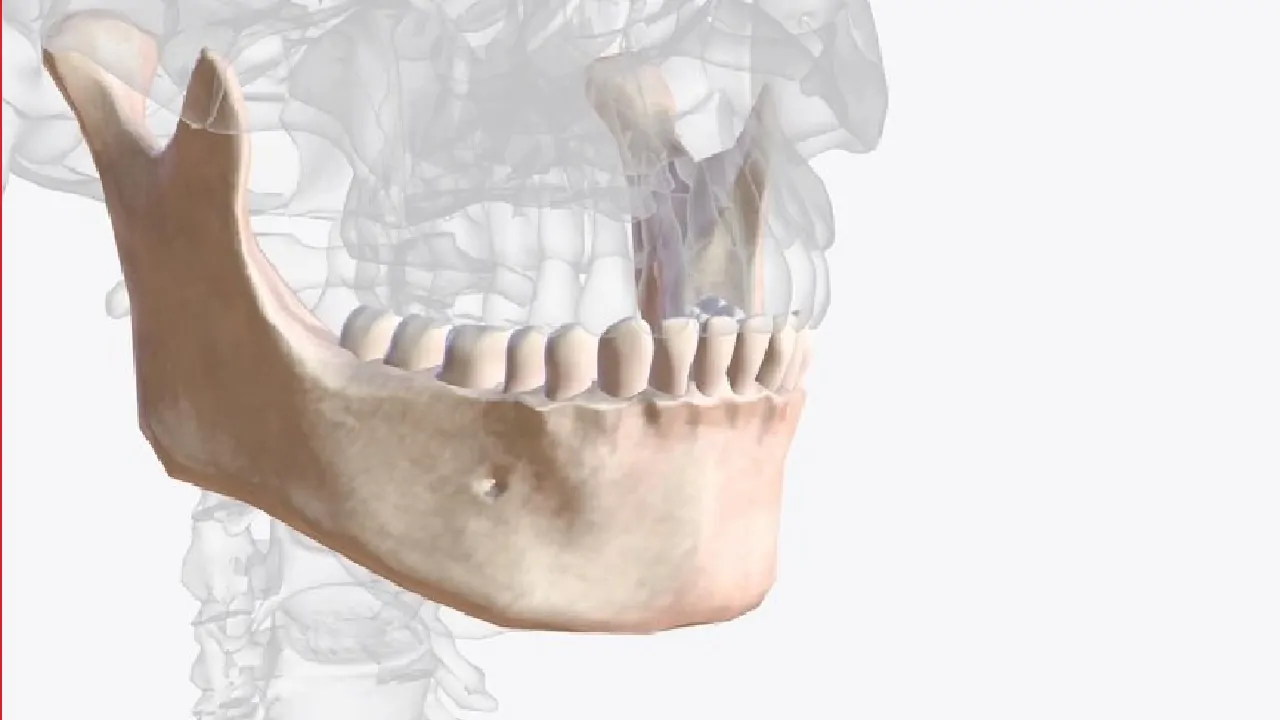
3. Surgical Procedure of Zygomatic implant Procedure
Once the patient is under anesthesia, an incision is made in the appropriate part of the gum tissue in the upper jaw to access the cheekbones. After the incision, the gum tissue is lifted, and the zygomatic bone (cheekbone) is reached. The previously determined point is located, and an implant socket is created. During this process, the angle of placement is also considered.
Once the preparation is complete, the zygomatic implants are placed at the appropriate angle, usually between 30-45 degrees. This ensures the most natural results.
4. Healing Process
The titanium implants placed by the dentist fuse with the cheekbones. This fusion process takes varying amounts of time depending on the patient’s metabolism, but on average it takes 2-4 months.
5. Permanent Prosthetics
Once the artificial tooth roots have fused with the cheekbone, permanent prosthetics are placed. After necessary adjustments and checks, the treatment is completed.
These are the general steps involved in the Zygomatic Implant Procedure. However, it is important to remember that the procedure is planned individually for each patient, and the steps may vary accordingly.
Advantages of the Zygomatic Implant Procedure
The Zygomatic Implant Procedure offers several advantages in not only for dental implant but also for jawline implants. The procedure is performed through an incision inside the mouth, and the implants are placed in the cheekbones. The key advantages of this treatment are summarized in the table below:
| Advantage | Explanation |
|---|---|
| No Need for Bone Grafting | It can be performed even in patients with severe bone loss in the upper jaw, without requiring bone grafts. |
| Faster Treatment Process | The recovery process is shorter compared to traditional implants, although it can vary from patient to patient. |
| Complete Oral Rehabilitation | Even in cases of severe bone loss, full dental restoration is possible. The strong structure of the cheekbone allows it to be used for many patients. |
| No Need for Sinus Lift | It can be performed without the need for a sinus lift procedure in the upper jaw. |
| High Success Rate | When performed correctly, the success rate is very high. The success rate of the Zygomatic Implant Procedure performed by experienced surgeons is above 97%. |
| Immediate Loading Potential | The strong structure of the cheekbone and the firm anchorage of the implants allow for the immediate placement of temporary prosthetics in some cases. |
| Psychological Benefits | Quick results and complete functional restoration positively impact the patient’s confidence. |
| High Stability | The structure of the cheekbone provides high stability for the implants. |
| Wide Applicability | The Zygomatic Implant Procedure has a wide range of applications. It can be used for patients who cannot undergo traditional dental implants due to congenital anomalies, bone resorption, or trauma. |
This procedure offers many advantages and can be used in combination with aesthetic dentistry treatments such as clear aligner therapy. However, it is not suitable for children and adolescents who have not completed their bone development. Therefore, it is not part of pediatric dentistry practices.
To benefit from the advantages of the Zygomatic Implant Procedure, it is essential to choose an experienced surgeon. Prof. Dr. Celal Çandırlı is highly experienced in the Zygomatic Implant Procedure. You can contact us for more information about this procedure and other jaw surgeries like as double jaw surgery.
Reviews from Zygomatic Implant Patients
Patients who have undergone the Zygomatic Implant Procedure are highly satisfied with the restoration of their missing teeth. Those who cannot benefit from traditional implant therapies due to bone resorption or other reasons find a permanent solution to their missing teeth through this procedure.
The structure of the cheekbone ensures the long-lasting success of the treatment. Additionally, the biocompatibility and durability of the titanium artificial tooth roots play a significant role in meeting patients’ expectations.
Post-Zygomatic Implant Procedure Care
The success of this procedure is directly related to the patient’s adherence to post-operative instructions. The key points to keep in mind after the Zygomatic implant Procedure are as follows:
- In the first days after surgery, patients are advised to consume liquid foods. During this period, extreme hot or cold foods should be avoided.
- Hard foods should be avoided until full healing is achieved. Full healing is completed after the permanent prosthetics are placed.
- Mild pain may occur after surgery, and there is a risk of infection. It is important to use prescribed painkillers and antibiotics regularly.
- Oral and dental hygiene should be carefully maintained.
Zygomatic Implant Prices
Zygomatic implant prices vary based on factors such as the patient’s oral structure, the number of implants, the complexity of the procedure, and the chosen implant brands. Other factors that influence the price include the doctor’s experience, the clinic’s pricing policy, and the patient’s general health status.
It is difficult to provide an exact price for the Zygomatic Implant Procedure. For up-to-date pricing and other inquiries related to the treatment, please feel free to contact us.
Frequently Asked Questions about the Zygomatic Implant Procedure
1. How is the Zygomatic Implant Done?
The Zygomatic Implant Procedure is performed by making an incision in the gum tissue inside the mouth. Through this incision, the zygomatic implants are placed in the cheekbones. After the healing process, permanent prosthetics are placed, and the treatment is completed.
2. What Are the Advantages of the Zygomatic Implant Procedure?
The key advantages include the lack of need for bone grafting, suitability for many patients, long-lasting results, and minimal side effects.
3. What Should Be Considered After the Zygomatic Implant Procedure?
After the Zygomatic Implant Procedure, patients should avoid eating hard foods and maintain good oral hygiene. Following the doctor’s instructions and recommendations increases the success rate of the treatment.
4. Is the Zygomatic Implant Procedure Difficult?
This procedure is performed under general anesthesia, and patients do not feel discomfort during the process. The recovery period is similar to traditional dental treatments, and it is a highly successful procedure for dental health.
5. Can Zygomatic Implants Be Used for Digital Smile Design?
Zygomatic implants are an excellent option for patients who cannot undergo traditional dental implants due to low bone density in the upper jaw. For these patients, zygomatic implants can be used in digital smile design treatments.
